
Introduction to Wales
Wales is one of four countries that make up the United Kingdom (UK). The others are England, Scotland and Northern Ireland.
Wales is a full-fledged country with its own government, parliament, courts and power to make its own laws. But it’s also under the umbrella of the British Royal Crown.
Oddly, the United Nations list of countries considers UK as one country, rather than listing each of the four countries within UK. Honestly, I don’t understand this.
Three of UK’s countries are located on the island of Great Britain, namely, England, Wales and Scotland. Wales is located in the southwestern section of the island, taking up less than 10% of the land area. It’s bordered by England on the east, but otherwise surrounded by seas.
England takes up about 58% of the southern end of the island. Scotland occupies the northern 32% of the island. The fourth country to make up UK is Northern Ireland, located on the northern tip of the island of Ireland.
The distinctive Welsh red dragon is the symbol of Wales and flies on its flag. As part of UK, the Welsh currency is GBP, the British Pound. Wales is bilingual, with Welsh and English as official languages.
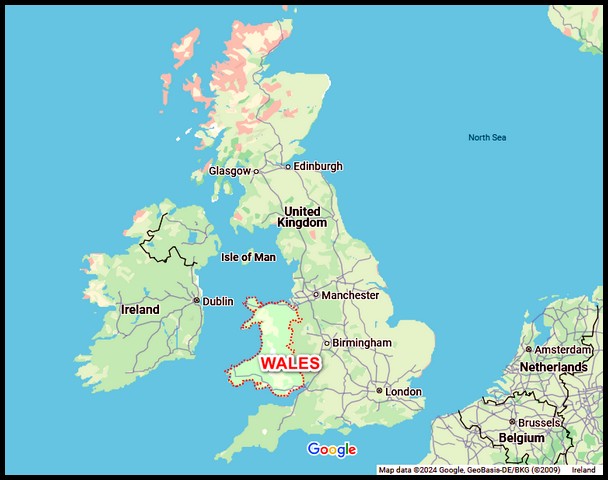
Geography of Wales
As noted above, Wales is surrounded by seas, aside from its eastern border with England. Southern and southeastern Wales lies along the broad, V-shaped Bristol Channel. Off the southwestern coast, St George’s Channel runs between Wales and the southern end of Ireland. The remaining west coast and north coast of Wales look onto the vast Irish Sea that runs between the islands of Great Britain and Ireland.
In total, Wales has over 870 miles of coastline. The coastal topography is quite diverse, including sandy beaches, stone beaches, rugged cliffs, rocky shorelines, sand dunes, grassy meadows and bays both large and small.
Wales is primarily hilly and mountainous. But its highest mountain, Mt Snowdon in Snowdonia National Park, is a mere 3560 ft / 1085 M.
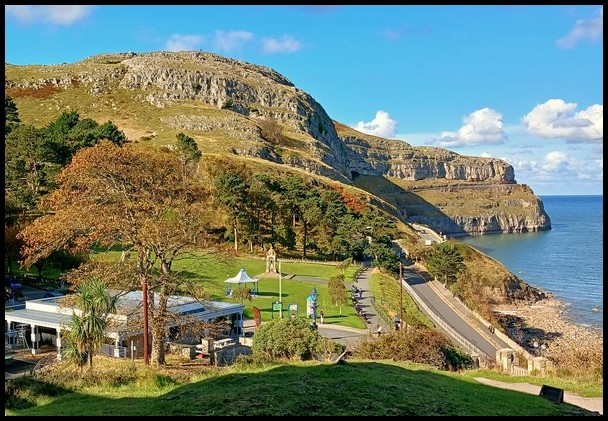
Wales is also primarily rural, with much land taken up by rural living, agriculture and pastures for sheep, cows and horses. Driving around Wales, visitors will mostly see bucolic, rolling hills of open meadows, fields and forests, along with valleys, rivers and streams.
Wales has three national parks and several other protected lands, including wetlands, national landscapes and areas of outstanding natural beauty. The three national parks include Snowdonia NP in far northwestern Wales, Pembrokeshire Coast NP in far southwestern Wales, and Brecon Beacons NP, located inland from the south coast.
Another prominent part of the Welsh landscape are its many castles. There are more than 600 castles, of various architecture, size, history and condition. In fact, Wales has the largest number of castles per square mile in the entire world!

Population of Wales
Wales has a rather minimal population of just 3.1 million. Considering that NYC has 10 million inhabitants and London has 8.9 million, one can see how small the Welsh population really is. In fact, the Welsh population accounts for only 4.2% of the total UK population, which is more than 68 million.
Cardiff is the capital city of Wales. It lies on the southeastern coast, over-looking vast Bristol Bay, with England on the far eastern side. It’s a compact city with an important history and a strong mix of historic stone buildings and modern ones.
Important landmarks include Cardiff Castle, the once bustling Cardiff Port area, huge Principality Stadium (which stages many important international sports and music events) and several excellent museums.
The Welsh government is centered at Cardiff. It’s a Devolved Government with a First Minister, Cabinet and elected Parliament. They meet at Cardiff’s ultra-contemporary Parliament building, which over-looks Cardiff Bay.
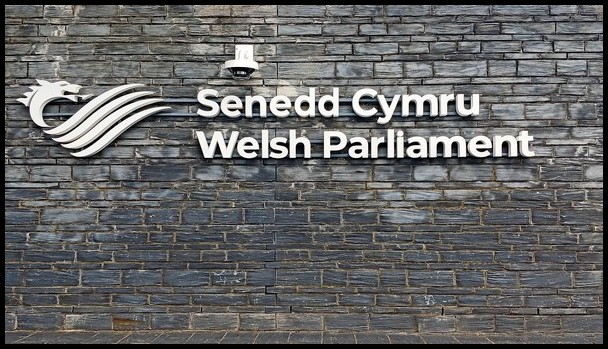
A Devolved Government means that governmental powers to rule itself were give over to Wales from the UK. That happened in 1999 by popular Welsh vote.
Wale’s other main cities include Swansea, about one hour west of Cardiff on the southern coast; Newport, just 30 minutes northeast of Cardiff; and Wexham in the far northeast, close to the border with England.
Of course there are plenty of small towns and villages scattered throughout the country, including along the coast. Many are beautiful historic towns filled with stone buildings from various ages, including churches and often castles.
In my experience traveling around Wales for two months, I found the Welsh to be very down-to-Earth, kind and helpful, well-meaning and with great hospitality.
Brief Ancient History of Wales
Humans have been living in Wales all the way back to Neanderthal times, more than 230,000 years ago. Modern humans have lived there since the end of the last ice age, earlier than 1000 BC. There’s plenty of archaeological evidence from the Mesolithic, Neolithic, Bronze and Iron ages.
During the Iron Age, 800 BC – 43 BC, the Celtic culture thrived throughout UK.
But in 43 AD, the Romans invaded UK, and subsequently the region of Wales. They remained for 400 years until they left sometime in 400s AD.
After that, Anglo Saxons took over UK. At that time a separate Welsh people, with a distinct Welsh language and customs, thrived in the area of Wales and have been there ever since.
The Welsh organized themselves into many separate kingdoms. Over the centuries, they sometimes fought, but also dealt with external pressures from England and later, Normans.
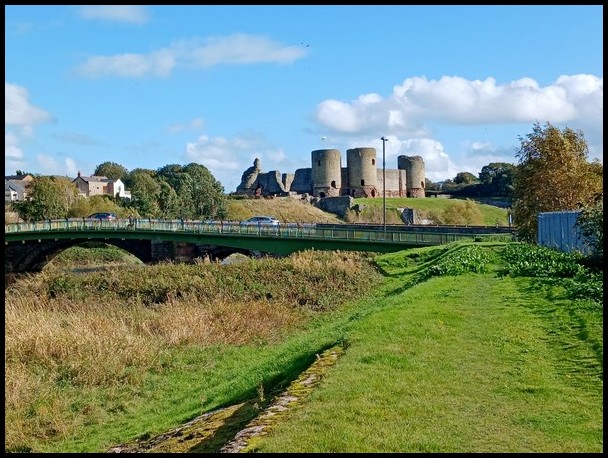
Wales gradually went under the sway of the British Royal Crown. In 1285, King Edward I of England took over Wales, placing it under the crown as the Principality of Wales, making himself Prince of Wales.
Wales has been under the umbrella of the British Crown ever since, but has also always retained their Welsh language and distinct customs, culture and food items. Even today, Wales is a bilingual country, with public signs in stores, on roads and other public places written in both Welsh and English.
Not surprisingly, over the centuries since 1285, there were various revolts and uprisings against England. Particularly important ones were in the 15th ad 16th centuries. Never the less, in 1707, Wales officially became part of the Kingdom of Great Britain, now United Kingdom of Great Britain.
It wasn’t until 1999, by popular Welsh vote, that an independent Welsh government was established, separate from the British government in London. Since then, Welsh determine their own laws. Yet they remain under the British Royal Crown.
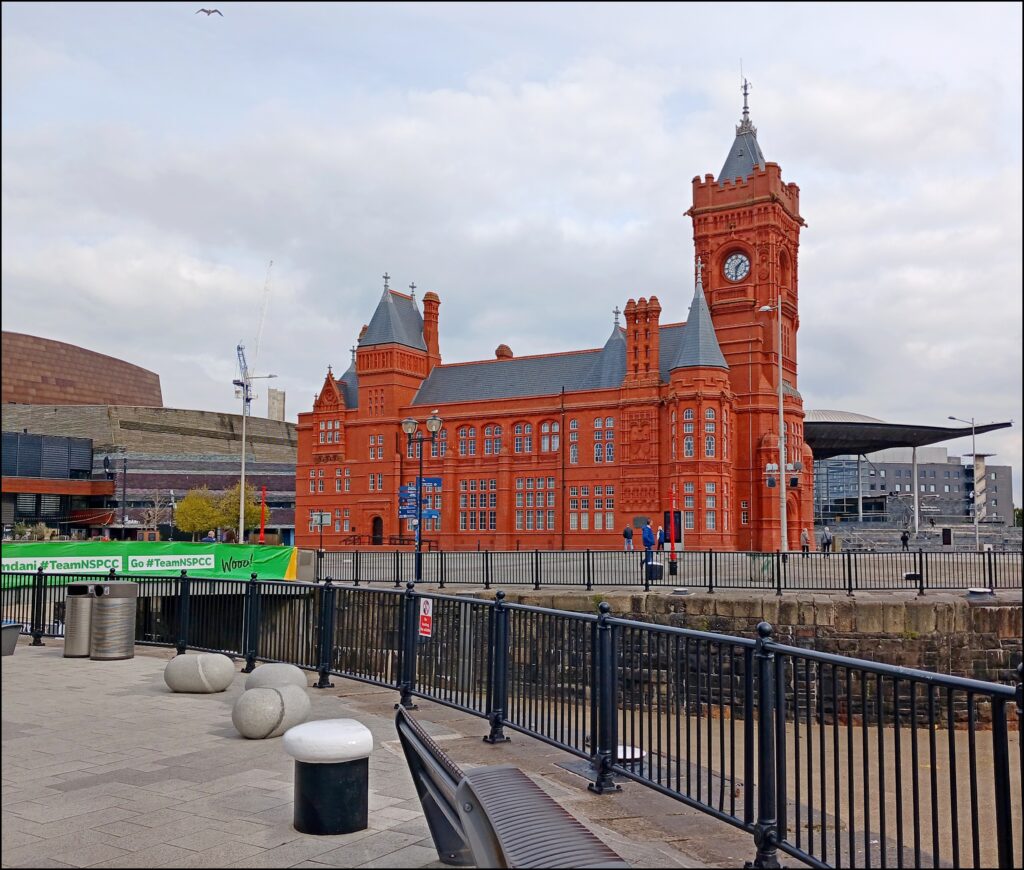
Brief Modern History of Wales
Wales came to prominence and wealth in the mid-late 1800s during the growing industrial revolution. Its importance was due to its vast reserves of very high quality coal, especially steam coal, that was so important to the trains and factories of the time.
The southern valleys of Wales were so productive with coal that Cardiff, a city on the southern coast, became one of the world’s most important ports in the world. For some time, it even exceeded the port of NYC in importance.
As the use of coal faded after WWII, so too did Cardiff’s bustling port, coal and trading industries. But the Welsh economy, standard of living and wages continued to flourish after WWII in other fields and today Wales still holds its own as a thriving first world country.
=====================
You might also enjoy:
LashWorldTour Travels around UK 2024
9 Quintessential Scottish Traditions
======================









 Hi! I'm Lash, an American nomadic world traveler who's been traveling solo since 1998. I’m passionate about traveling the world nomadically and then sharing it all with you. I hope to inspire you to travel the world, to entertain you with tales from the road, and to help you reach your travel dreams. Welcome!
Hi! I'm Lash, an American nomadic world traveler who's been traveling solo since 1998. I’m passionate about traveling the world nomadically and then sharing it all with you. I hope to inspire you to travel the world, to entertain you with tales from the road, and to help you reach your travel dreams. Welcome! 




1 pings
15 Surprising Facts about Wales - LashWorldTour
2024/11/02 at 10:26 pm (UTC 8) Link to this comment
[…] « Introduction to Wales […]